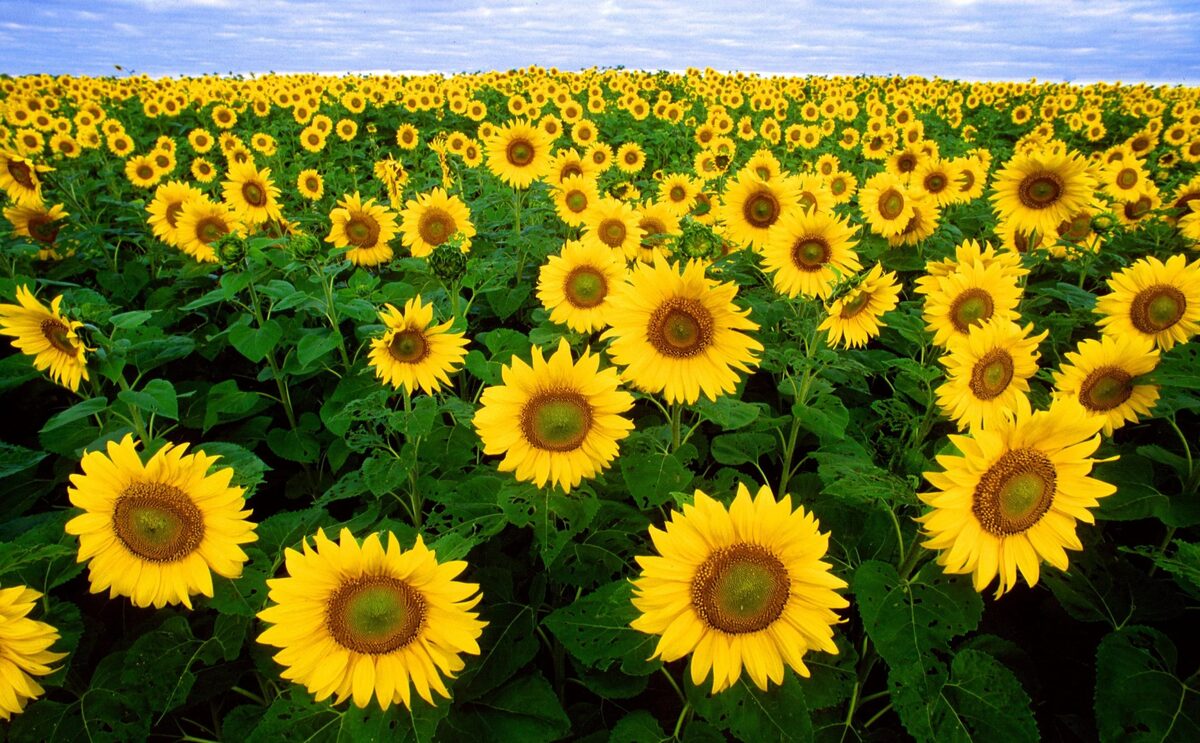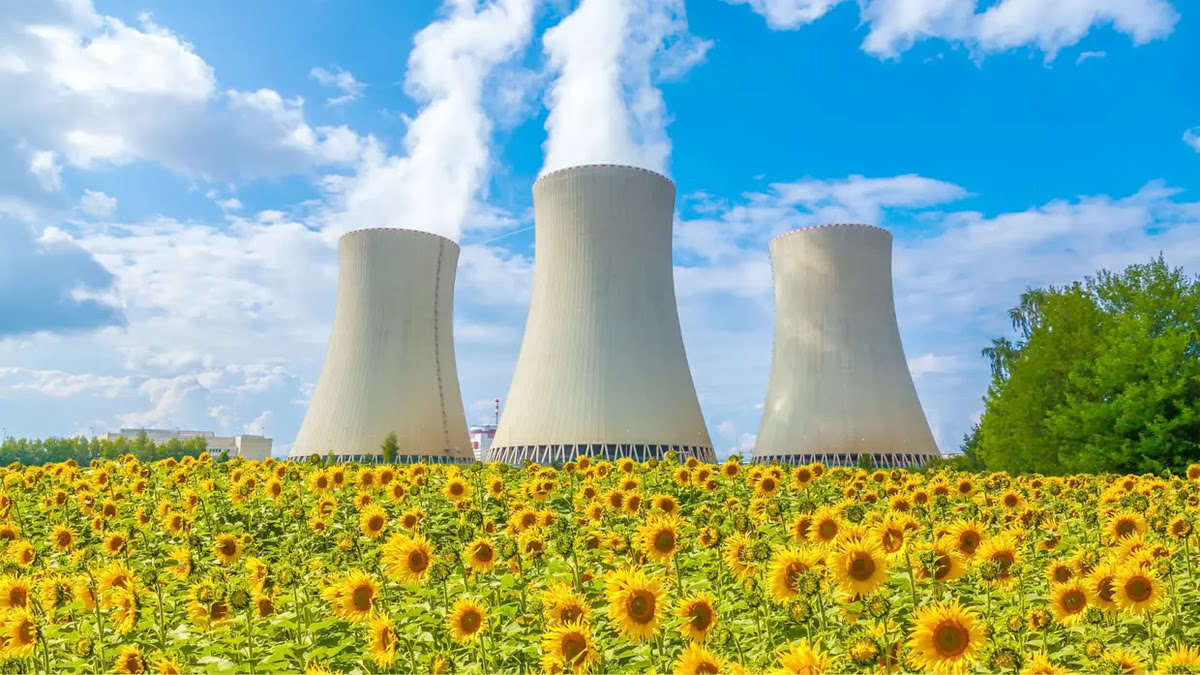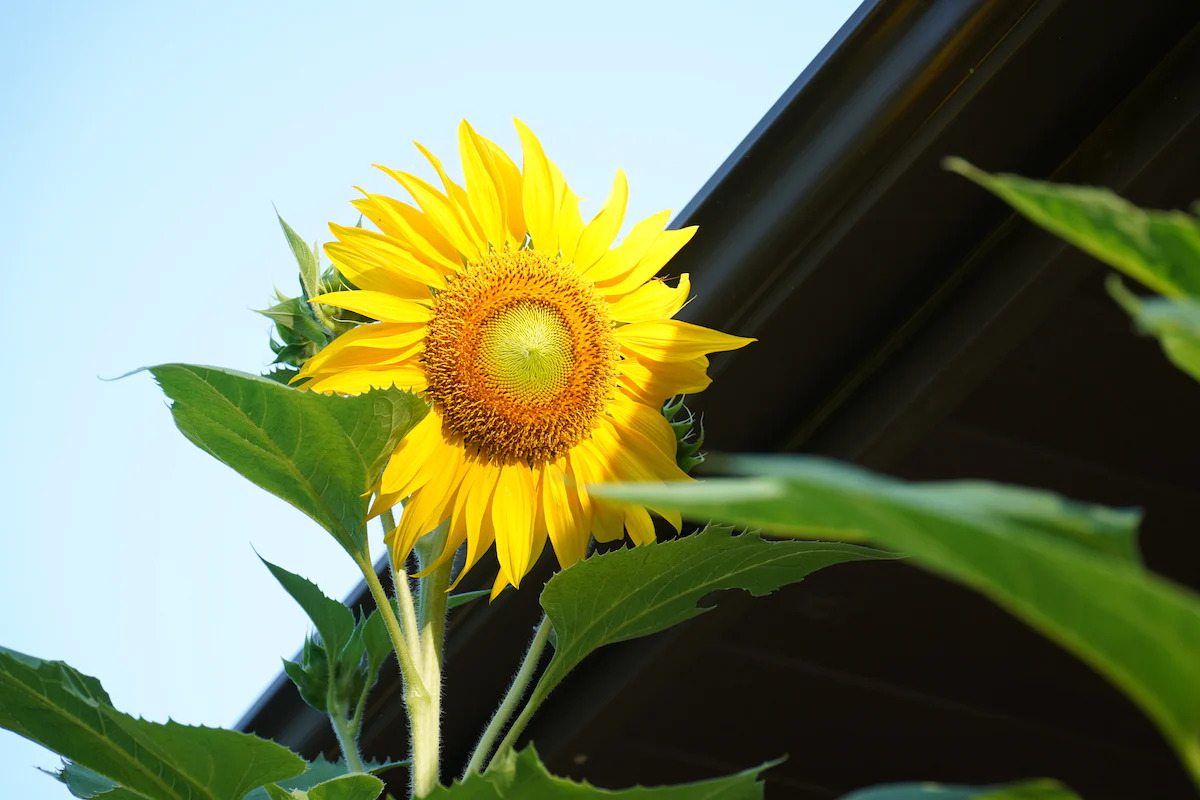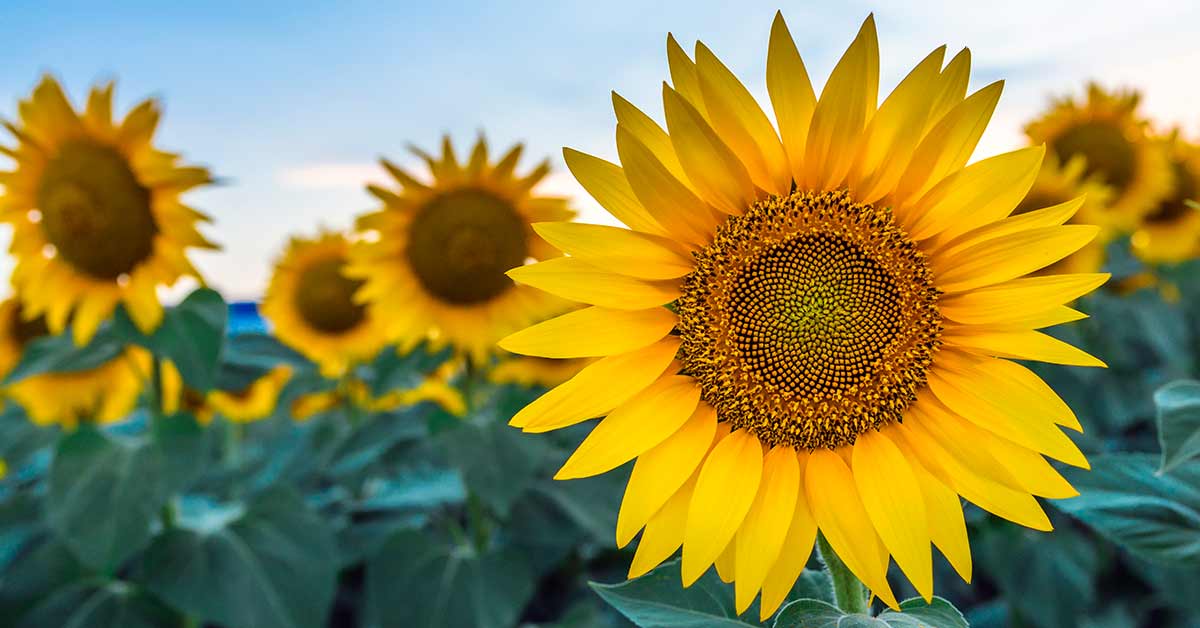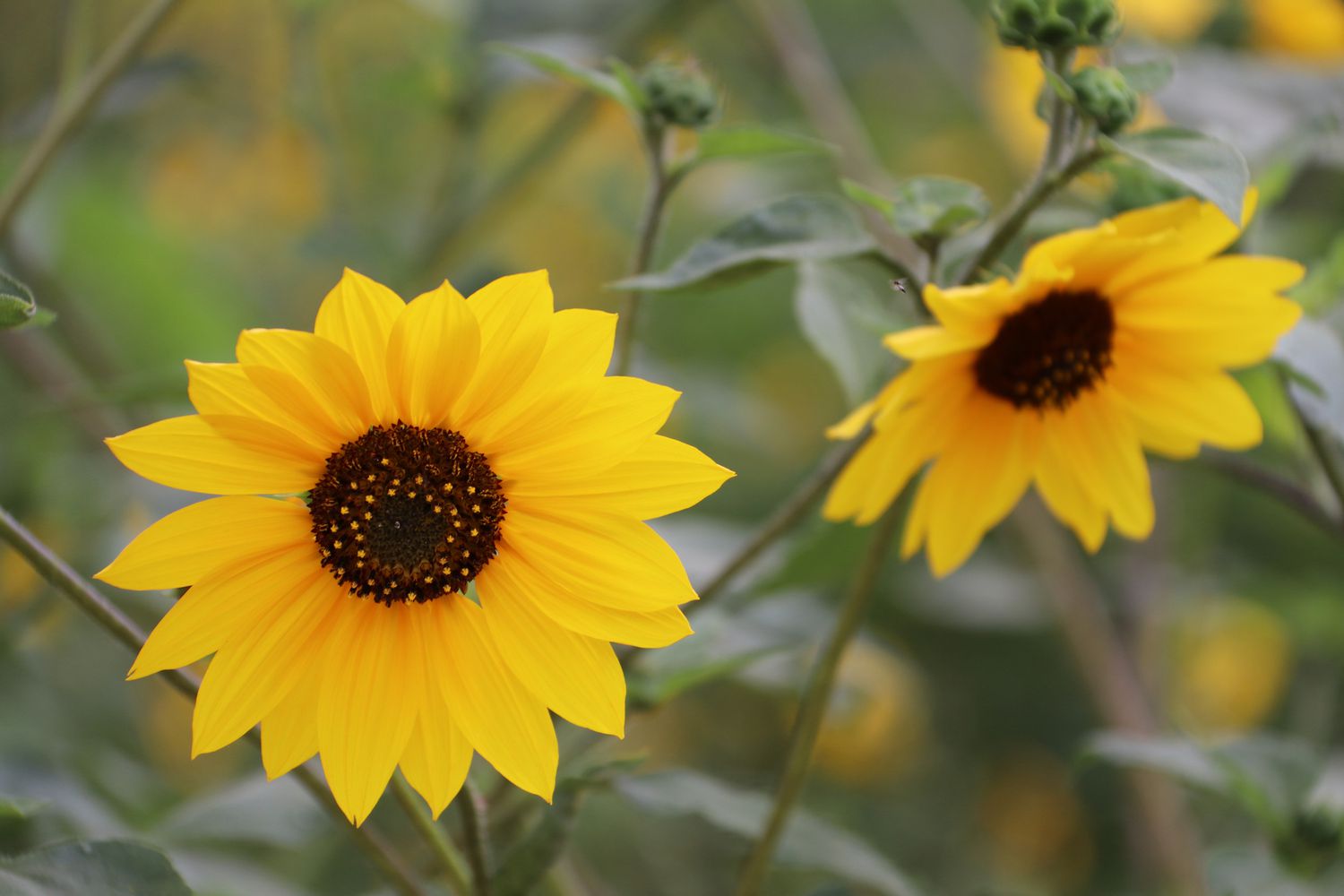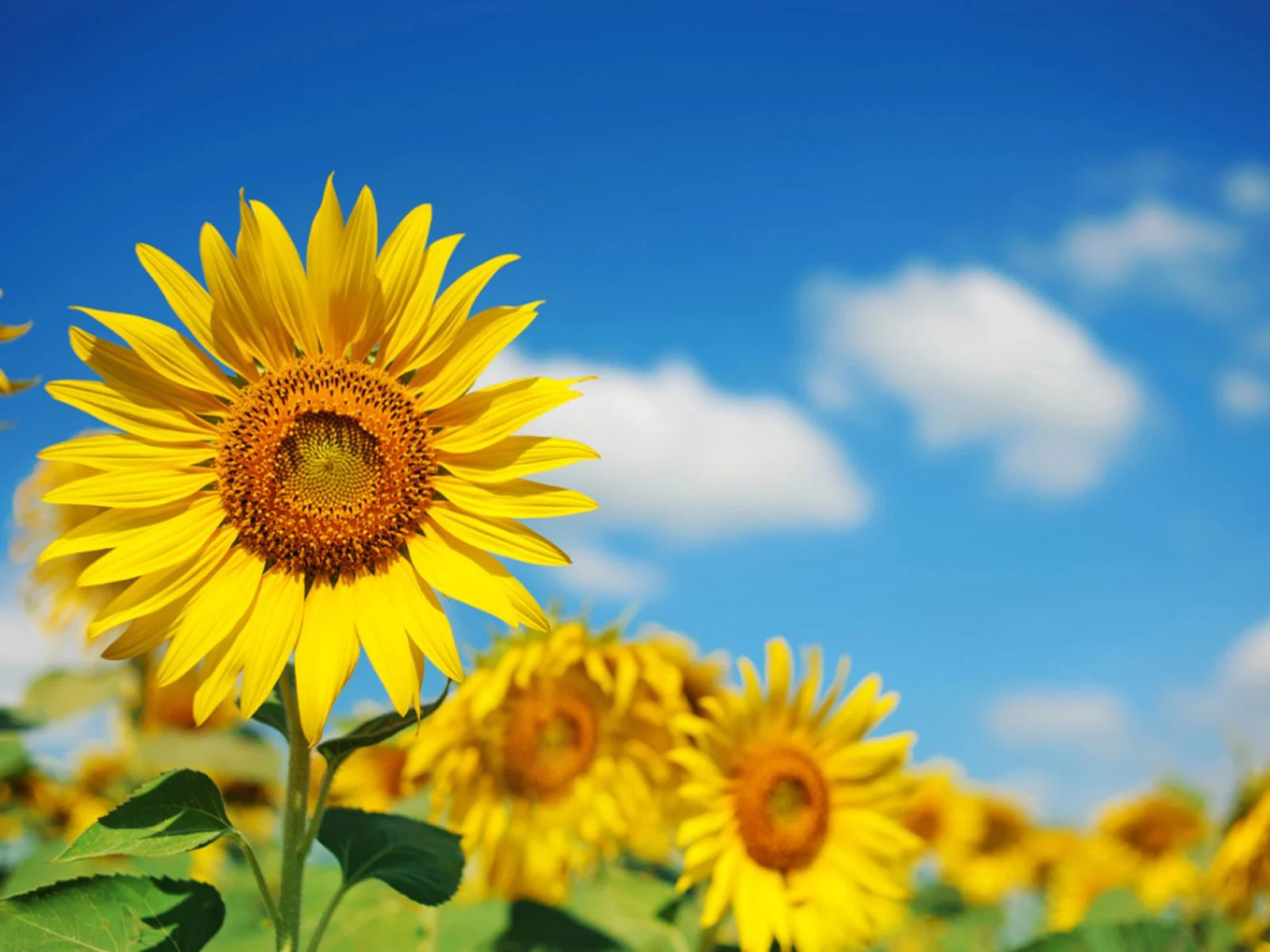Home>Types of Gardening>Ornamental Gardening>Why Are Sunflowers Scary


Ornamental Gardening
Why Are Sunflowers Scary
Modified: January 22, 2024
Discover the truth behind why sunflowers can be scary in ornamental gardening. Uncover the surprising reasons and how to overcome your fears.
(Many of the links in this article redirect to a specific reviewed product. Your purchase of these products through affiliate links helps to generate commission for Chicagolandgardening.com, at no extra cost. Learn more)
Table of Contents
Introduction
The Enigmatic Allure of Sunflowers
When one thinks of sunflowers, the mind often conjures images of bright, cheery blooms swaying in the summer breeze. These iconic flowers, with their radiant yellow petals and dark, mysterious centers, have captivated the human imagination for centuries. However, beyond their apparent beauty lies a complex and enigmatic nature that has both fascinated and unsettled people throughout history.
In this article, we will delve into the multifaceted world of sunflowers, exploring their rich history, their darker aspects, their significance in folklore and culture, and the profound psychological impact they have on individuals. From their origins in the Americas to their pervasive presence in art, literature, and popular culture, sunflowers have left an indelible mark on humanity’s collective consciousness.
Join us on a journey to unravel the mysteries and marvels of sunflowers, as we seek to understand why these seemingly innocuous flowers have the power to evoke both joy and trepidation in equal measure.
The History of Sunflowers
Native to the Americas, sunflowers (Helianthus annuus) have a rich and storied history that dates back over 3,000 years. Indigenous peoples, particularly those of the Great Plains, revered the sunflower as a symbol of vitality, sustenance, and spirituality. They not only utilized the seeds as a valuable food source but also imbued the sunflower with deep cultural significance, incorporating it into various rituals and ceremonies.
It wasn’t until the 16th century that sunflowers made their way to Europe, courtesy of Spanish explorers who were captivated by the plant’s striking beauty and practical uses. The sunflower quickly gained popularity across the continent, with its oil-rich seeds becoming a sought-after commodity. By the 18th century, Russian farmers had begun cultivating sunflowers for oil production on a large scale, further solidifying the plant’s place in agricultural history.
During the 19th and 20th centuries, advancements in breeding and cultivation techniques led to the development of sunflower varieties with higher oil content, paving the way for the widespread commercial production of sunflower oil. Today, sunflowers are cultivated across the globe, with countries such as Russia, Ukraine, Argentina, and the United States being major producers.
Furthermore, the sunflower’s significance extends beyond agriculture. Its striking appearance has made it a popular subject in art, particularly in the works of renowned artists such as Vincent van Gogh, who immortalized the flower in his iconic paintings. The sunflower’s journey from its humble origins in the Americas to its widespread cultivation and cultural impact serves as a testament to its enduring allure and adaptability.
The Dark Side of Sunflowers
While sunflowers are often associated with positivity and vitality, they also possess a darker, more enigmatic side that has intrigued and even unsettled individuals throughout history. One aspect that contributes to this duality is the sunflower’s unique heliotropic behavior, wherein the flower heads track the sun’s movement across the sky during the day. While this characteristic is often celebrated for its symbolic representation of optimism and resilience, it has also evoked a sense of unease in some, with the constant motion of the sunflower mirroring a haunting, almost voyeuristic presence.
Furthermore, the sunflower’s towering height and imposing stature can evoke feelings of intimidation and vulnerability in equal measure. Standing tall and commanding attention, the sunflower can cast long, eerie shadows, particularly as dusk descends. This juxtaposition of grandeur and eeriness has led to the sunflower being associated with themes of looming darkness and hidden depths.
Moreover, the sunflower’s dense, dark center, known as the disc floret, has been a source of fascination and fear. In certain cultures, the disc floret’s resemblance to a watchful eye has given rise to superstitions and folklore associating sunflowers with notions of surveillance and foreboding omens. This juxtaposition of radiant beauty and disconcerting symbolism has contributed to the sunflower’s enigmatic allure, inspiring a myriad of interpretations and artistic representations.
Despite its association with darkness, the sunflower’s mystique lies not in malevolence, but in its ability to evoke a range of emotions and perceptions, transcending traditional notions of floral symbolism. By embracing the sunflower’s enigmatic nature, we gain a deeper appreciation for its complexity and the profound impact it has had on human consciousness throughout the ages.
Sunflowers in Folklore and Culture
Throughout history, sunflowers have held a significant place in folklore and culture, their enigmatic nature and striking appearance inspiring a myriad of interpretations and symbolic associations. In various cultures, sunflowers have been revered as symbols of adoration, loyalty, and vitality, while also embodying themes of mystery and introspection.
Among Native American tribes, sunflowers were revered for their spiritual significance and practical utility. They were not only cultivated for their nutritious seeds but also held sacred as symbols of sustenance, fertility, and the sun’s life-giving energy. The sunflower’s radiant blooms and heliotropic behavior were seen as manifestations of resilience and adaptability, qualities that were deeply revered and incorporated into tribal lore and rituals.
In European folklore, the sunflower’s association with the sun and its characteristic heliotropism led to its symbolism as a harbinger of light, hope, and positivity. However, the sunflower’s dark center also gave rise to superstitions and tales associating it with themes of introspection, mystery, and even unrequited love. In Slavic folklore, for instance, the sunflower was often linked to the myth of the vain maiden who, pining for the sun, was transformed into a sunflower, forever gazing longingly at its celestial muse.
Art and literature have also been deeply influenced by the enigmatic allure of sunflowers. Renowned artists such as Vincent van Gogh immortalized the sunflower in their works, infusing the flower with layers of emotional and symbolic depth. Van Gogh’s iconic series of sunflower paintings, in particular, captured the flower’s radiant beauty and haunting mystique, cementing its status as an enduring motif in artistic expression.
Today, sunflowers continue to be celebrated in popular culture, often symbolizing themes of optimism, vitality, and the enduring beauty of nature. From their presence in literature and poetry to their symbolic significance in various ceremonies and celebrations, sunflowers remain a powerful emblem of human creativity, resilience, and the enigmatic interplay between light and darkness.
The Psychological Impact of Sunflowers
Beyond their physical attributes and symbolic associations, sunflowers wield a profound psychological impact on individuals, evoking a complex array of emotions and perceptions. Their vibrant yellow petals and commanding presence often elicit feelings of joy, optimism, and vitality, serving as potent visual stimuli that can uplift and energize the human spirit. The sight of sunflowers in full bloom can evoke a sense of awe and wonder, connecting individuals to the transcendent beauty of the natural world.
Conversely, the enigmatic nature of sunflowers, with their dark, hypnotic centers and towering stature, can trigger feelings of introspection, mystery, and even unease in some individuals. The interplay between light and shadow within the sunflower’s blooms can create a sense of duality, inviting contemplation of life’s complexities and the coexistence of beauty and darkness within the human experience.
Furthermore, the heliotropic behavior of sunflowers, as they track the sun’s movement across the sky, can serve as a metaphor for resilience and adaptability, inspiring individuals to embrace change and seek light in the face of adversity. This intrinsic quality of the sunflower resonates deeply with the human psyche, symbolizing the capacity to thrive and flourish even in challenging circumstances.
From a therapeutic standpoint, the presence of sunflowers and their depiction in art and decor has been shown to have a positive impact on mental well-being. The vibrant hues and dynamic forms of sunflowers can stimulate feelings of hope, optimism, and rejuvenation, making them a powerful symbol in the realm of mental health and emotional healing.
Ultimately, the psychological impact of sunflowers transcends their physical manifestation, tapping into the depths of human emotion and perception. Whether inspiring feelings of joy and vitality or prompting contemplation and introspection, sunflowers continue to wield a profound influence on the human psyche, serving as a timeless source of inspiration and reflection.
Unraveling the Mysteries of Sunflowers
As we conclude our exploration of sunflowers, we find ourselves immersed in the captivating tapestry of their history, symbolism, and psychological impact. From their ancient roots in the Americas to their pervasive presence in folklore, art, and culture, sunflowers have woven a complex narrative that transcends traditional floral symbolism.
The allure of sunflowers lies not only in their radiant beauty and practical utility but also in their enigmatic duality, evoking emotions ranging from joy and vitality to introspection and mystery. Their heliotropic behavior, imposing stature, and dark, hypnotic centers have granted them a multifaceted symbolism that continues to intrigue and inspire individuals across time and cultures.
Through our journey, we have witnessed the sunflower’s profound psychological impact, as it serves as a potent catalyst for emotions, perceptions, and introspection. Whether uplifting the human spirit with its vibrant hues or prompting contemplation of life’s complexities, the sunflower stands as a timeless emblem of resilience, adaptability, and the enduring interplay between light and darkness.
As we part ways with the enigmatic sunflower, let us carry with us the profound lessons it imparts—the capacity to thrive in adversity, the beauty in embracing change, and the enduring power of nature to inspire, heal, and captivate the human soul. May the enigmatic allure of sunflowers continue to kindle our imaginations and stir our emotions, reminding us of the timeless mysteries and marvels that await discovery in the natural world.
